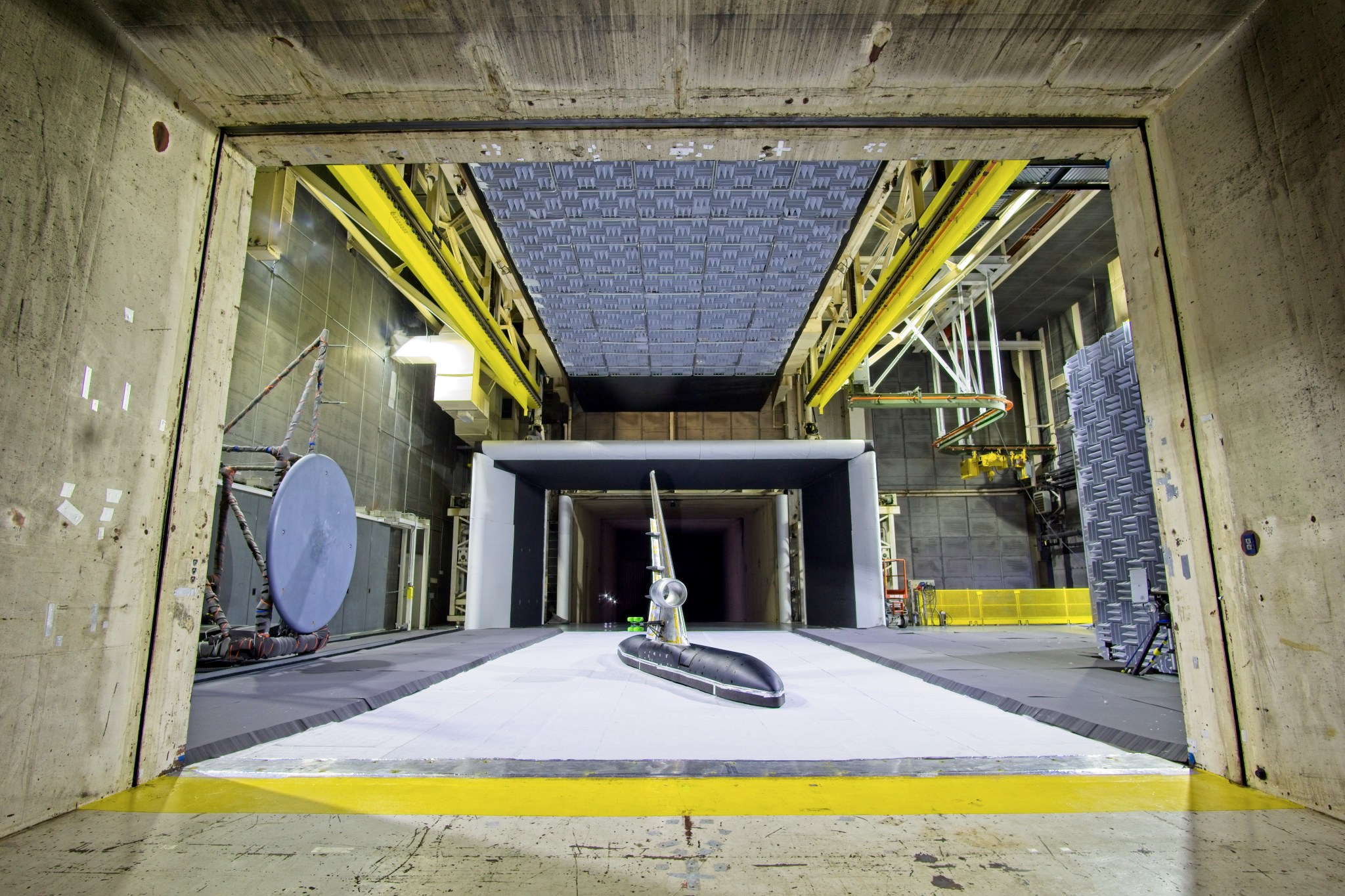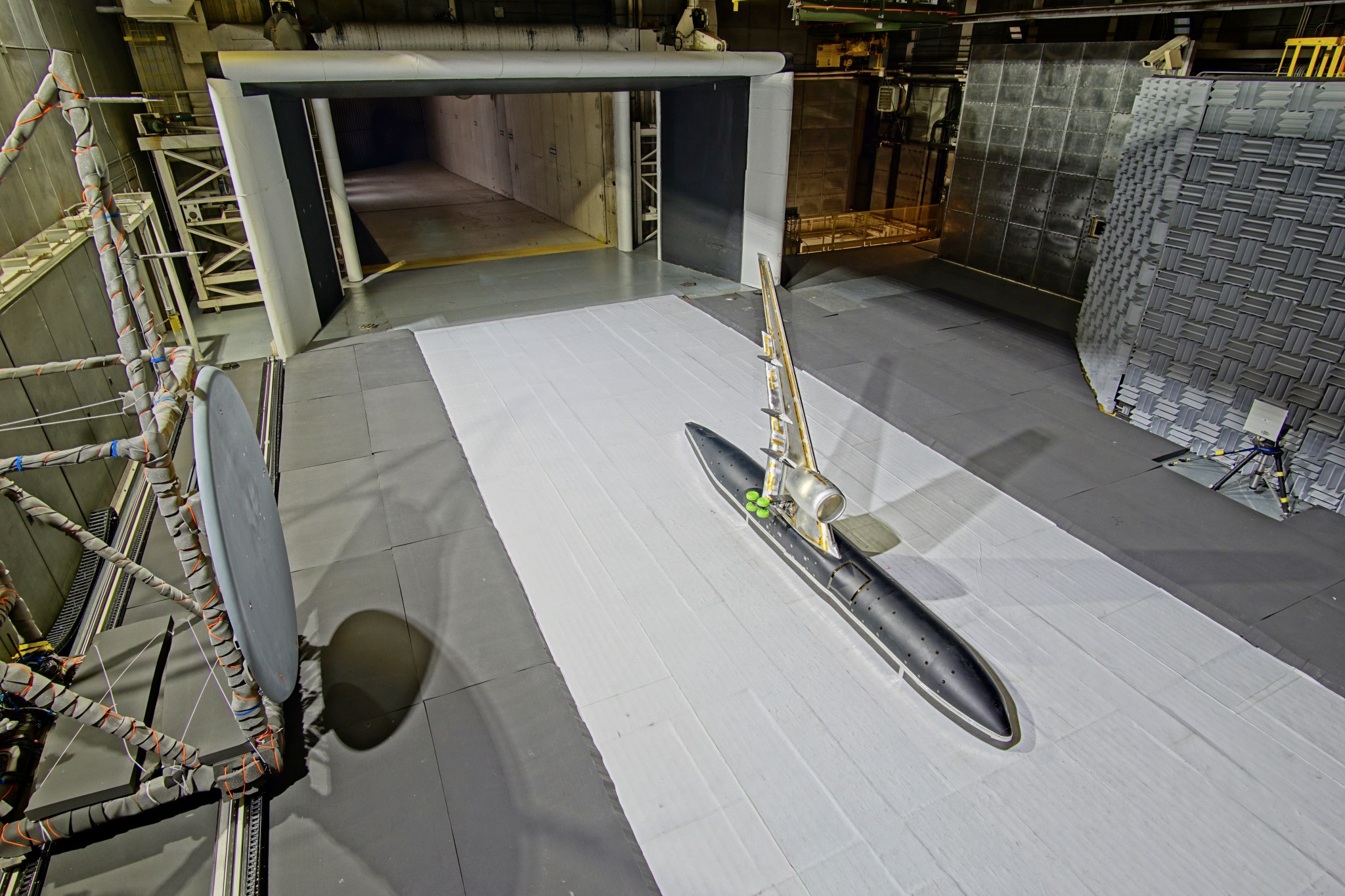Loud noise from aircraft during take-off and on a low approach to a runway is nothing new for those who live near airports, but it is a consistent complaint. Researchers at NASA’s Langley Research Center in Hampton, Virginia completed a round of testing in late January 2021, on an experimental leading-edge wing design with the intention to reduce the noise caused by aircraft.
Aircraft noise reduction, including that of the airframe, is an important goal of NASA’s Advanced Air Transport Technology (AATT) Project, which is supporting a combined experimental and computational effort to better understand and mitigate the sources associated with slat noise.
“Mitigating this noise emission not only has direct benefits to residents living near airports but also has financial benefits as the landing fees at many airports are tied to the noise generated by the aircraft using the runways,” said David Lockard, primary investigator of the Quiet-High-Lift version of the Common Research Model (CRM-QHL).
“The non-propulsive sources of aircraft noise include high-lift devices like the leading-edge slat and trailing-edge flaps of the aircraft’s wing,” said Lockard. “Model-scale tests, fly-over noise measurements and numerical simulations have identified the leading-edge slat as a prominent source of airframe noise during aircraft approach.”
To further develop airframe noise reduction technology, NASA has constructed a 10%-scale version of the High-Lift Common Research Model (CRM-HL) to evaluate various aircraft enhancements including low-noise slats.
The goal of January’s test in NASA Langley’s 14×22 subsonic tunnel was to demonstrate the effectiveness of slat noise-reduction concepts constructed out of shape-memory alloys.
“Shape-memory alloys allow them to undergo the relatively large deformations needed for the devices to stow when the slat is retracted,” said Lockard. “Low-noise slats were developed using small-scale testing and computational techniques that assessed their aerodynamic, structural, and acoustic performance.”
The ultimate goal is to develop the technology so that industry can readily adopt it.
Large-scale wind-tunnel testing can be challenging especially during a global pandemic. The team faced many challenges including COVID-19 protocols such as sterilization measures, lengthy clearance processes, and increased down-time between operations.
The project also had to install new facility components that allowed for the reduction of background noise that was discovered.
“I had a college professor who told me not to go into aerodynamics because all the easy problems have already been solved,” said Lockard. “He was probably right that nothing comes easy, but through the combined power of computational and experimental techniques, we are still making progress.”
The QHL-CRM will continue a series of additional tests during the spring of 2021 here at NASA Langley as they continue to discover more ways to reduce the noise of passing aircraft.
David Meade
NASA Langley Research Center




































